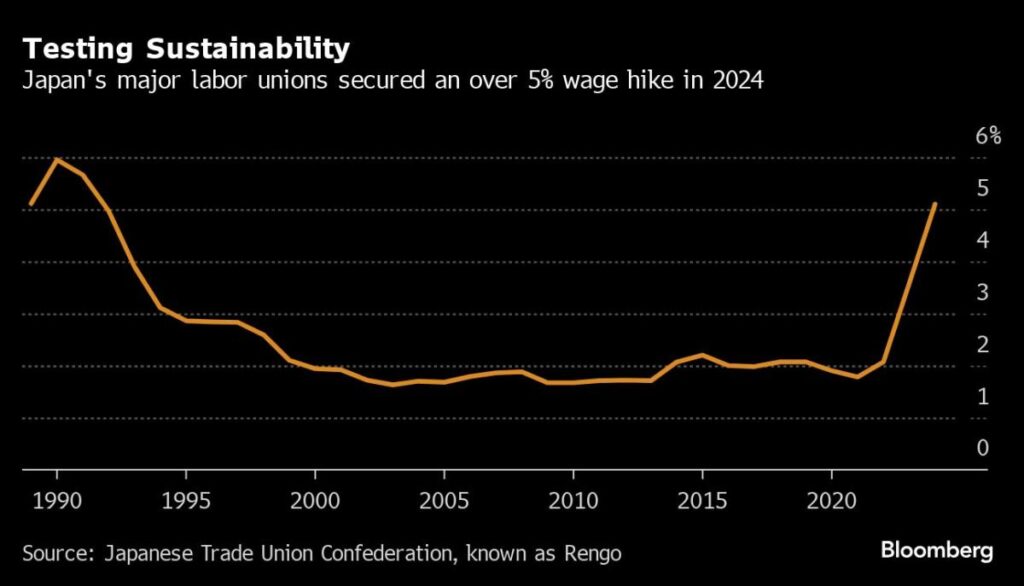Japan’s wage growth momentum is critical to the success of Prime Minister Shigeru Ishiba’s administration and the timing of the Bank of Japan’s next interest rate adjustment. Maintaining positive upward wage trends is vital for both political stability and economic recovery, particularly as Ishiba prepares for a general election. Wage negotiations, slated to begin in earnest through Rengo, Japan’s largest labor union federation, are expected to focus on achieving significant increases, with preliminary targets set for at least a 5% rise next year. This projection signals a desire for continued pressure on wages in the face of inflationary trends that have already posed challenges to household finances, underscoring the importance of these negotiations in the broader economic landscape.
Wage negotiations and their outcomes are part of a larger narrative involving the Bank of Japan, which is carefully monitoring signs of a sustainable cycle of rising wages and prices. Currently, average cash earnings have risen by only 2.3% through August, which lags behind the acceleration of prices, meaning many households are still feeling the pinch of increasing living costs. The pressure on Lewis emerged during the leadership of former Prime Minister Fumio Kishida, whose administration saw declining approval ratings primarily due to economic frustrations surrounding wages and inflation. As such, the focus on wage growth is central to Ishiba’s strategy to stabilize his administration and boost public confidence.
A timeline of significant wage negotiation events over the next year illustrates the phased approach to this critical economic issue, beginning with Rengo’s announcement of baseline salary increase goals. The federation’s basic plan, set to be released on October 18, is expected to reflect ambitions akin to last year’s target, with expectations of a 3% base wage increase contributing to the overall push for a 5% total pay hike. As the planning unfolds, Ishiba is also charged with delivering a strategic economic package that includes provisions to support wage growth, while past attempts at wage support and economic stimulation have evoked mixed public responses.
The months leading up to March, particularly from October to January, are pivotal as large companies begin reveling their wage plans, which will serve as early indicators of the overall trend for wage increases. Historical data shows that the commitment of prominent firms influences industrial norms, with examples from past years predicting substantial pay increases that both reflect the public sentiment and place pressure on smaller firms. The early wage deals struck by some large corporations could establish a trend that carries through into the formalized negotiations led by Rengo and sets expectations for the broader workforce.
As negotiations proceed, various segments of the workforce will come into focus. The first significant insights are expected by early March when Rengo compiles and announces the average pay demands from its member unions. Subsequent announcements reveal the results of the negotiations, marking critical points where wage outcomes influence the Bank of Japan’s policy decisions. In the past, such increases have been linked to pivotal monetary policy shifts, indicating a direct connection between visible wage growth and monetary easing or tightening actions.
In addition to corporate wages, the government’s role in supporting wage growth extends to minimum wage discussions, which are expected to continue through mid-August. Ishiba’s commitment to elevating minimum wages to ¥1,500 per hour holds the potential for longer-term wage increases across the labor market, particularly impacting lower-income workers. By advocating for wage raises, both at corporate and governmental levels, Ishiba aims to build momentum toward an inclusive wage growth strategy that might enhance the overall prosperity of the Japanese economy, amidst the challenges posed by regional economic dynamics and rising inflationary pressures. Through these concerted efforts, the sustainability of Japan’s wage growth remains paramount for both political and economic stability in the near future.

